Floods and drought in 2019, a locust invasion in 2020, and now COVID-19: How do these incidents, particularly COVID-19 affect the food supply chain in the Horn of Africa?
 by Justus Njeru
by Justus Njeru May 8, 2020
May 8, 2020 9 min
9 min
Locust invasion, which followed a spell of flood and drought in 2019 left farmers in the horn of Africa left the farmers in anguish. Before the farmers could recover, Covid-19 has brought a new cause of concern. On the other hand, these disasters seem to bring new equilibrium in the agri-value chains coordination. This blog analyzes the role of digitization, innovative agriculture finance and policy and regulations to safeguard food supply chain in the COVID-19 era.
Fifty-five-year-old Joshua is a smallholder horticultural farmer from Kiambu County, Kenya. He has endured the vicious cycle of droughts and floods all his life, most recently in 2019. He recently survived the desert locust infestation and his tomatoes are blossoming. Like many other smallholder farmers, Joshua has relied on people who live and work in Nairobi for a stable market for his farm produce. The directives to stay at home and maintain social distance, and the resultant job losses have had a great impact on the purchasing power and patterns of urban and suburban dwellers. This, in turn, has affected the ability of producers like Joshua to access a large and stable market. He now has to hawk his tomatoes by the roadside on the rack of his car. His post-harvest losses have escalated significantly. He can only access the market for a few hours in the day, and can barely make enough to feed his family.
“I would rather die of COVID-19 out here rather than be at home in quarantine and watch my family die of hunger”, he says. Yet why would feeding a household force someone to disregard their health and risk of spreading the virus? Joshua’s desperation has become a common refrain for most low- and medium-income segments as they go on with their daily hustle in total disregard of government health directives. COVID-19 has demonstrated the reality that, without a daily wage, most families in the low- and middle-income segments are a meal away from starvation.
In this blog, we analyze the impact of COVID-19 across the agriculture sector in Kenya using a value chain approach. The analysis focuses on the current situation and looks at the medium-term reaction and impact of the COVID-19 pandemic.
The wheel of misfortune that has hit the agricultural sector in the horn of Africa
Africa’s annual food import bill has been rising each year from USD 35 billion in 2017 to an estimated USD 110 billion by 2025. Increasing food imports highlight the inability of the continent to produce and feed her population adequately—a situation amplified by recent disasters.
In 2019, about 45 million people suffered the drought across Eastern Africa, Southern Africa, and the Horn of Africa. However, heavy rains experienced later in the year had given the prospect for a reduced humanitarian crisis at the start of the year 2020. Then, towards the end of December 2019, the first swarm of the desert locust was seen on its way to the horn of Africa. Unfortunately, in Kenya, this coincided with the harvest period during the short rain season, leading to massive loss of farmers’ output. And the locusts seem set to return with a vengeance in 2020.
The pandemic impact (COVID-19)
The shock of COVID-19 may well be more severe than the financial crisis of 2007–08. Most countries have limited movement or imposed total lockdown in a bid to contain and combat the disease. In Kenya, for example, the government has announced a raft of policies to mitigate the pandemic. These include cessation of movement into and out of the capital city, dusk-to-dawn curfew, social distancing, among others. Just like other smallholder farmers, Joshua remains coy over the future of his farming business, as the measures have affected the entire value chain. The farmers are worried about the impact of tighter government measures down the line with the uncertainty surrounding the pandemic.
Impact of COVID-19 on the agriculture value chain
Four months after the outbreak, the pandemic has reduced productivity, curtailed social interactions, and forced us to adjust styles of working. Yet labor-intensive sectors like agriculture have suffered the greatest impact
Agri-input supply and advisory services: The current pandemic has disrupted the input and advisory supply to a limited extent. The situation will not change soon as most of these services and inputs are produced in anticipation of the onset of the season. The seasonal nature of agriculture production provides the manufacturers and suppliers adequate time to manage stock smoothly. Input supplies, however, may be affected marginally in the short to medium term, should the situation prolong. Most of the inorganic fertilizer, chemicals, and other inputs are sourced from abroad. Closed borders and suspension of the main forms of shipment—air and water—will have an impact on the supply of the situation that persists in the long-term.
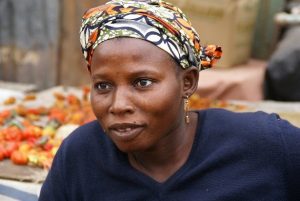
Production: COVID-19 has primarily affected the capital cities and major towns across Africa. In rural Africa, far fewer cases have been reported at the time of writing. With smallholder farmers largely driving production, the first harvesting season is likely to see minimal disruption to production. However, as the disease spreads and governments impose tighter measures, production may be affected, especially that of cash crops, vegetables, and cereals. The disruptions extend to microfinance and informal savings groups, which form a critical source of finance for rural farmers. COVID-19 has forced the microfinance sector to put a hold on all disbursements. This means most rural people, including farmers, have no access to funding.
In turn, this will lead to constrained investment in the sector. In the next couple of months, we expect that production will slump, the food market will be disrupted, and food crises will follow. Smallholder farmers in rural areas are especially vulnerable to the pandemic as they are less likely to have access to healthcare facilities with oxygen and ventilators. This is compounded by the fact that any added financial shocks from hospital admission or funeral costs for rural households can be devastating.
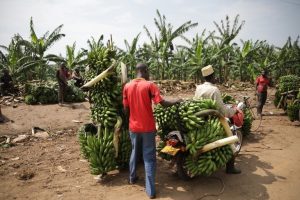
Transportation: Most governments have recognized food delivery as an essential service. However, geographic restrictions (both within countries and across borders), and curfews have had a great impact on the movement of agricultural produce. Some truckers have already suspended their services due to a fear of contracting and spreading the virus, coupled with the constrained demand in retail markets due to the reduced purchasing power of customers and the closure of restaurants and hotels.
A businessperson from Kilifi country, Mr. Wachira, has returned to his ancestral home in Central Kenya. He owns several trucks that transport fresh produce from Mpeketoni, in Lamu County in the coastal region of Kenya. These trucks supply to major markets across the counties of Mombasa, Kilifi, Kwale, and Lamu itself. His clients typically include tourist hotels along the coastal region, major retail traders, and convenience stores. The COVID-19 situation saw most of his clients cancel orders as the hotels remained deserted. His truckers also requested him for unplanned leave from work, days before the government announced movement restriction.
Processing: As production and transportation decreases, the processors are finding it increasingly difficult to maintain the supply chain for both raw materials and products. With the contraction in the financial markets under the full impact of the pandemic, access to credit for the processors will become difficult. The processors have also suffered in terms of workforce. Reduced working hours due to curfews and lockdowns have seen workers either declared redundant or asked to work from home. Essential processes that require physical labor have also been affected greatly.
Retail: The pandemic has had a heavy impact on the market for food. The disease has brought economic suffering and loss of jobs, which has in turn reduced purchasing power. Meanwhile, the policies adopted to mitigate the spread of the infection have also hurt the retail business. The responses to control the spread of the virus has affected enterprises, such as the hotels and restaurants, value addition industries, and transport that would normally operate 24 hours a day. Some have closed entirely while others have been operating under restricted timings due to the curfews.
The situation may worsen if the spread of the pandemic continues. As the spread reaches the rural producers, most retailers have lost operating capital and have both fewer customers and fewer suppliers of the products. Interestingly, partnerships between e-commerce players and convenience stores have seen a spike, as demand increases for home delivery of goods to customers during lockdowns. This may become the modus operandi until the situation normalizes. This leaves us with the question—will it be a permanent trend, as the customers taste digital approaches?
African man in forest
Call to action
The earlier sections depict Kenya’s situation under COVID-19. However, these issues pervade all countries in the Horn of Africa. In this regard, we see the importance of governments across the region to consider the following:
- Monitor the impact of COVID-19 over the crop seasons that spans March 2020 to December 2020: As community transmission of the virus grows from major towns to rural areas, there will be a need to ascertain the exact impact on the sector by end of current cropping cycle. This is going to provide relevant data for the players in the agriculture ecosystem to plan strategies for the sector to bounce back.
- Accelerate the role of digitization: Agri-digitization initiatives in the continent have increased in the past two years. However, most are at the infancy or pilot stage. The creation of accelerator programs that target agritechs in Africa will help curb the over-reliance on human resources in food production and distribution. Cash transfers and transfers of other government benefits have seen great success, offering lessons that the agricultural sector across Africa could borrow and integrate.
- Re-imagined and innovative agriculture finance strategies: Most formal financial service providers consider agriculture finance as too risky. However, the critical role of the sector for economies in Africa, especially in times of disaster, is now evident. There is, therefore, a need to apply an ecosystem-oriented approach to address this. Credit-guarantee programs and hedge financing are some of the initiatives required to help the sector bounce back after the pandemic. In March, the Central Bank of Kenya announced measures to mitigate the adverse effects of the coronavirus pandemic on the banking sector. However, the microfinance sector, which the central bank does not regulate, awaits similar support measures. Meanwhile, agriculture sub-sector finance will also require a special focus.
- Consider adequate policy and regulatory changes: Most governments in Africa have restrictive trade and taxation policies. For example, input supplies are often highly centralized. Would this be the best time to rethink the decentralization of seeds and other agricultural inputs? The taxation regime (VAT and other taxes) for agriculture trade will also require review as the sector might take a bit longer to bounce back. The Kenya Revenue Authority has directed a reduction in VAT and PAYE. Similar decisions, which would benefit the agricultural sector are expected. The ministry of agriculture is working on reforms to facilitate access to inputs, mechanization, and in discussion with other agencies to reduce trade tariffs for agriculture commodities.
Agriculture contributes over 25% of most African economies GDP, over 70% of employment, and among the top foreign exchange earner. Targeted government subsidy programs to the agriculture sector will not only help the sector to bounce back but will induce GDP growth and job creation as well in the post-COVID-19 recovery phase.
Read a similar analysis by MSC for the Asia market on:
- Food security: How are agriculture and the corner shops faring amid India’s lockdown?
- Innovations and coping strategies for food security at the time of COVID-19
Written by

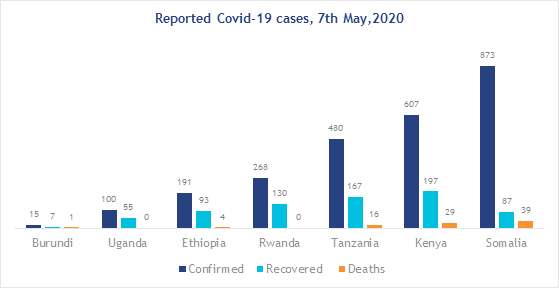
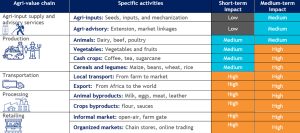
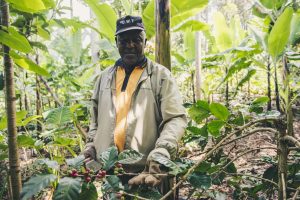
Leave comments